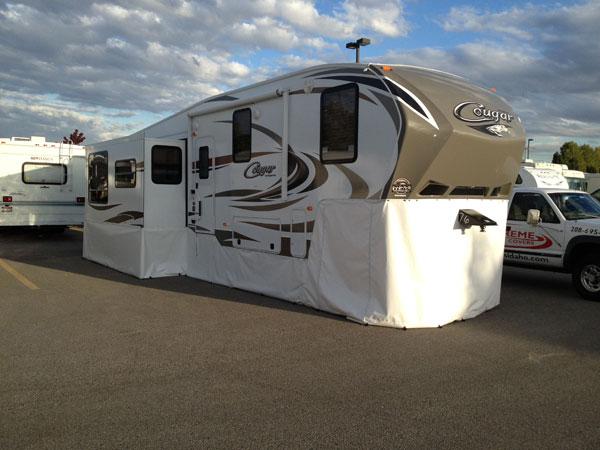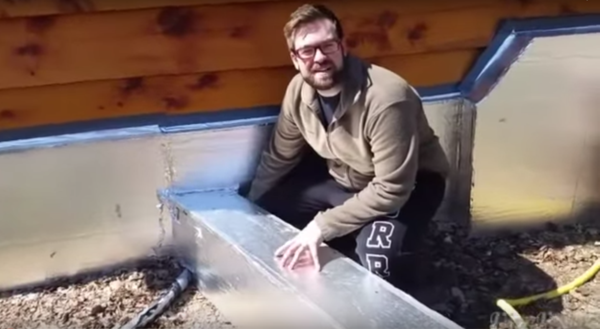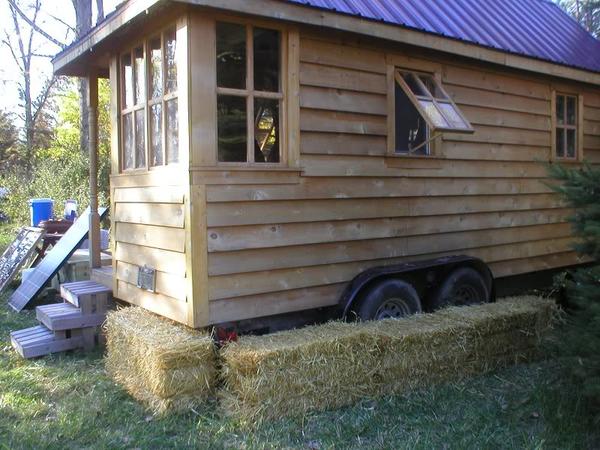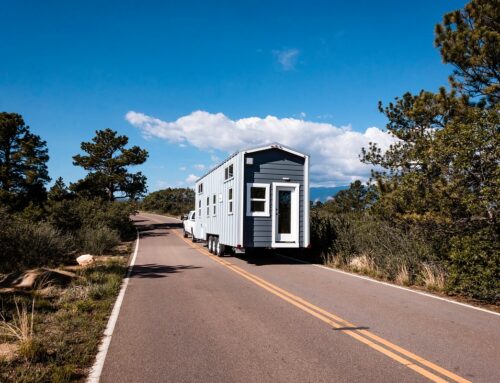Kasl Family Tiny House RV skirt: Concrete Panels & Straw Bales. Photo credit.
What is “Skirting” and Why is it Recommended?
Skirting is insulating material tucked around the bottom of your trailer, reducing the amount of cold air flowing under your trailer, therefore protecting exposed utilities and increasing heat efficiency. Even though the Tumbleweed trailer allows for 3 1/2 inches of insulation in the floor, trailer skirting is still recommended in extremely cold climates. It’s a great way to reduce your heat bills!
Five Options for Tiny House RV Skirting:

Engineered Canvas / Fabric / Concrete Panels: There are many companies out there that make custom RV skirts. Advantages: Proven efficiency, snug fit, low maintenance and often covered by warranty. Disadvantages: Can be expensive.
Engineered RV Skirting Photo Credit


Straw Bales: A cheap DIY option is to purchase straw bales and tuck them around your trailer. Tip: Wrap your straw bales with a trap or heavy duty trash bags for extra protection.
Jonathan’s Tumbleweed Cypress in the process of skirting with straw bales. Photo credit.
Snow: Free option, if you live in an area with a large amount of snow. Pile snow around your trailer. Dig out your vents / water systems. This option will require consistent observation and maintenance.







